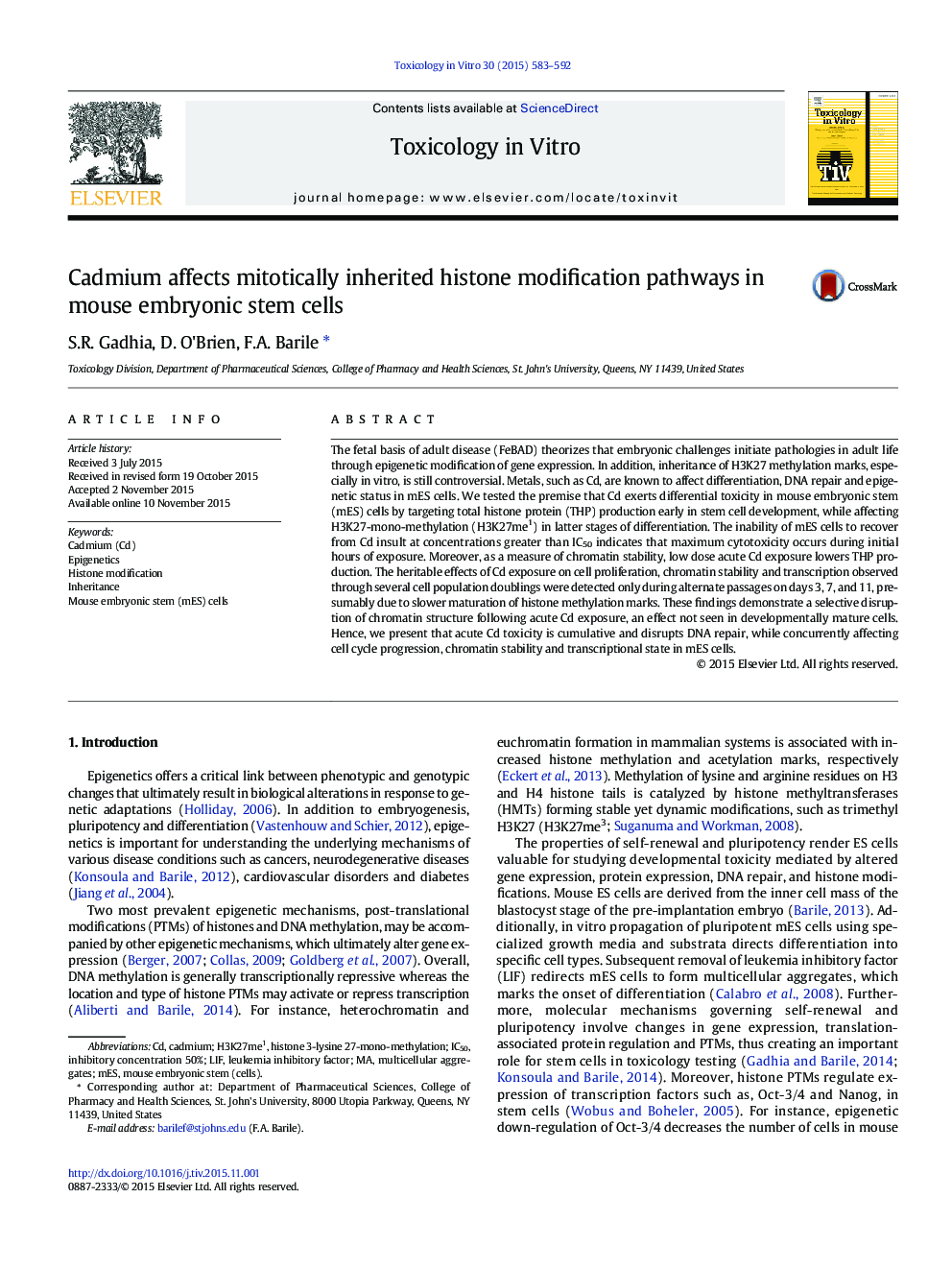| Article ID | Journal | Published Year | Pages | File Type |
|---|---|---|---|---|
| 2602439 | Toxicology in Vitro | 2015 | 10 Pages |
•Cd toxicity is mitotically inherited in stem cell cultures and expressed in alternate passages as H3K27me1 modification.•Cd preferentially affects S phase of the stem cell cycle.•Cd preferentially suppresses chromatin stability.•Epigenetic toxicity in stem cells depends on cellular differentiation.
The fetal basis of adult disease (FeBAD) theorizes that embryonic challenges initiate pathologies in adult life through epigenetic modification of gene expression. In addition, inheritance of H3K27 methylation marks, especially in vitro, is still controversial. Metals, such as Cd, are known to affect differentiation, DNA repair and epigenetic status in mES cells. We tested the premise that Cd exerts differential toxicity in mouse embryonic stem (mES) cells by targeting total histone protein (THP) production early in stem cell development, while affecting H3K27-mono-methylation (H3K27me1) in latter stages of differentiation. The inability of mES cells to recover from Cd insult at concentrations greater than IC50 indicates that maximum cytotoxicity occurs during initial hours of exposure. Moreover, as a measure of chromatin stability, low dose acute Cd exposure lowers THP production. The heritable effects of Cd exposure on cell proliferation, chromatin stability and transcription observed through several cell population doublings were detected only during alternate passages on days 3, 7, and 11, presumably due to slower maturation of histone methylation marks. These findings demonstrate a selective disruption of chromatin structure following acute Cd exposure, an effect not seen in developmentally mature cells. Hence, we present that acute Cd toxicity is cumulative and disrupts DNA repair, while concurrently affecting cell cycle progression, chromatin stability and transcriptional state in mES cells.
